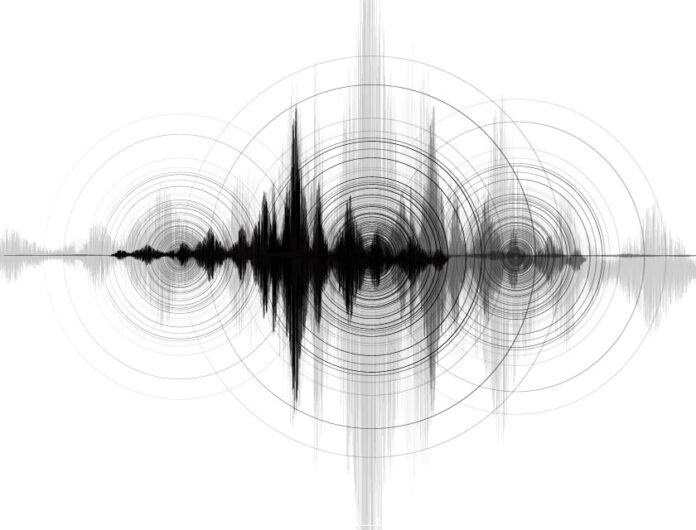Un nuovo approccio di intelligenza artificiale potrebbe aiutare a prevedere la posizione delle scosse di assestamento a seguito di un terremoto
An terremoto is a phenomenon caused when rock underground in the Terra crust suddenly breaks around a geological fault line. This causes rapid release of energy which produces seismic waves which then make the ground shake and this is the sensation we fell during an earthquake. The spot where the rock breaks is called focus of the terremoto and place above it on ground is called ‘epicentre’. The energy released is measured as magnitude, a scale to describe how energetic was an earthquake. An earthquake of magnitude 2 is barely perceptible and can be recorded only by using sensitive specialized equipment, while earthquakes of more than magnitude 8 can cause the ground to noticeably shake very hard. An earthquake is generally followed by many aftershocks occurring by a similar mechanism and which are equally devasting and many times their intensity and severity is similar to the original earthquake. Such post-quake tremors occur generally within the first hour or a day after the main earthquake. Forecasting spatial distribution of aftershocks is very challenging.
Gli scienziati hanno formulato leggi empiriche per descrivere l'entità e il tempo delle scosse di assestamento, ma individuare la loro posizione è ancora una sfida. I ricercatori di Google e dell'Università di Harvard hanno ideato un nuovo approccio per valutare i terremoti e prevedere la posizione delle scosse di assestamento utilizzando la tecnologia dell'intelligenza artificiale nel loro studio pubblicato su Natura. Hanno utilizzato specificamente l'apprendimento automatico, un aspetto dell'intelligenza artificiale. Nell'approccio di apprendimento automatico, una macchina "impara" da un insieme di dati e dopo aver acquisito questa conoscenza è in grado di utilizzare queste informazioni per fare previsioni sui dati più recenti.
I ricercatori hanno prima analizzato un database di terremoti globali utilizzando algoritmi di deep learning. L'apprendimento profondo è un tipo avanzato di apprendimento automatico in cui le reti neurali cercano di imitare il processo di pensiero del cervello umano. Successivamente, miravano a essere in grado di previsione aftershocks better than random guessing and try to solve the problem of ‘where’ the aftershocks will occur. Observations collected from more than 199 major earthquakes around the world were utilized consisting of around 131,000 mainshock-aftershock pairs. This information was combined with a physics-based model which describing how Terra would be strained and tense after an earthquake which will then trigger aftershocks. They created 5 kilometer-square grids within which system would check for an aftershock. The neural network would then form relationships between strains caused by main earthquake and the location of aftershocks. Once neural network system was well-trained in this manner, it was able to predict location of aftershocks accurately. The study was extremely challenging as it used complex real-world data of earthquakes. Researchers alternatively set up artificiale e tipi di terremoti "ideali" per creare previsioni e quindi esaminare le previsioni. Esaminando l'output della rete neurale, hanno cercato di analizzare quali diverse "quantità" possono controllare la previsione delle scosse di assestamento. Dopo aver effettuato confronti spaziali, i ricercatori sono giunti alla conclusione che un tipico modello di scossa di assestamento era fisicamente "interpretabile". Il team suggerisce che una quantità chiamata seconda variante della tensione da stress deviatorico, chiamata semplicemente J2, è la chiave. Questa quantità è altamente interpretabile ed è normalmente utilizzata nella metallurgia e in altri campi, ma non è mai stata utilizzata prima per lo studio dei terremoti.
Aftershocks of earthquakes cause further injuries, damage properties and also hinder rescue efforts therefore predicting them would be life-saving for humanity. Real time forecast may not be possible at this very moment as the current AI models can deal with a particular type of aftershock and simple geological fault line only. This is important because geological fault lines have different geometry in diverse geographical location on the pianeta. So, it may not be currently applicable to different type of earthquakes around the world. Nevertheless, artificial intelligence technology looks suitable for earthquakes because of n number of variables which need to considered when studying them, example strength of the shock, position of tectonic plates etc.
Le reti neurali sono progettate per migliorare nel tempo, ovvero più dati vengono inseriti in un sistema, più apprendimento avviene e il sistema migliora costantemente. In futuro un tale sistema potrebbe essere parte integrante dei sistemi di previsione utilizzati dai sismologi. I pianificatori potrebbero anche attuare misure di emergenza basate sulla conoscenza del comportamento dei terremoti. Il team vuole utilizzare la tecnologia dell'intelligenza artificiale per prevedere la magnitudo dei terremoti.
***
{Puoi leggere il documento di ricerca originale facendo clic sul collegamento DOI indicato di seguito nell'elenco delle fonti citate}
Fonte (s)
DeVries PMR et al. 2018. Apprendimento approfondito dei modelli di scosse di assestamento a seguito di grandi terremoti. Natura560 (7720).
https://doi.org/10.1038/s41586-018-0438-y
***






































